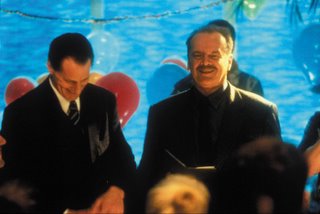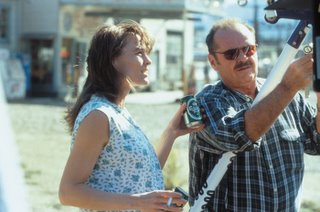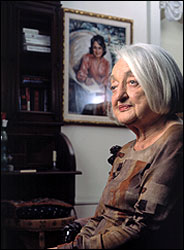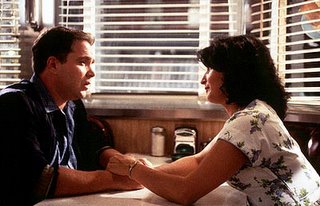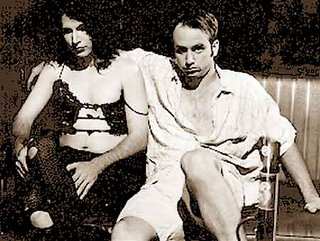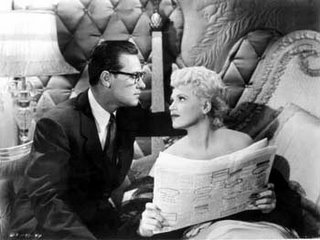
Make Way for Tomorrow (1937)
Director: Leo McCarey
There is no shortage of devastating films available for viewers with a taste for tragedy. With Oscar winners about the Holocaust, documentaries about child prostitutes and murderers, war films of every stripe, adaptations of Shakespeare's tragedies in plentiful supply, I hardly dare believe it myself when I say that Make Way for Tomorrow is the saddest, most tragic film I have ever seen. After all, it's a Hollywood product, a feature film based on a novel that takes place primarily in New York City among middle-class people. Those qualities alone should mean that it is more likely to be a self-indulgent melodrama with a quick, cathartic pay-off. In fact, nothing could be further from the truth. This film is an extremely uncomfortable look at the problems of the elderly and of adults sandwiched between dependent parents and dependent children. It is an indictment of the selfishness of the younger toward the older. Most touchingly and tragically of all, it is the story of a marriage that shouldn't have ended, but did.
As the film opens, senior citizens Lucy and Barkley ("Bark") Cooper (Beulah Bondi and Victor Moore) have gathered four of their five grown children together (daughter Addie lives across the country in California) at the family homestead to tell them that Bark's four years of unemployment have depleted their savings and caused them to default on their mortgage. The bank manager, who was an unsuccessful suitor of Lucy's, generously gave them six months to pack up and find new lodgings. Son George (Thomas Mitchell) says that's plenty of time for them all to pitch in and find the couple an apartment; the other siblings squirm nervously at the expense soon to come their way. However, the elder Coopers say they hoped "something would turn up" and therefore have only a few days left before they have to be out. This is the first indication that the Coopers are nervous about how much they can count on their children.
None of the siblings can take both parents in right away. Daughter Cora, who lives upstate with her unemployed husband, takes in Bark, and George brings Lucy to live with him and his wife and daughter in their apartment in Manhattan. The arrangement is supposed to be for three months, at which time daughter Nellie and her husband Harvey will take them both in; of course, Harvey objects, saying, "I married you, not your family." So, for the first time in 50 years, Lucy and Bark are separated and prospects of them being reunited are now uncertain.
Lucy's stay at George's grates on his wife Anita (Fay Bainter), who teaches bridge in their home. Lucy kibbutzes with Anita's students and disrupts her lessons; perhaps most irritatingly, Anita does not think Lucy takes her work seriously. Lucy meddles in the household chores, sending laundry to the wrong cleaner at the wrong time without letting anyone know. The maid, played by Louise Beavers not as a servant but as an employee with rights, complains that she has to stay evenings with Lucy and may quit if she can't get her nights off again. Worst of all, Lucy's granddaughter Rhoda (Barbara Read) has stopped bringing her dates home for Anita to meet because she is embarrassed by her grandmother hovering around. At the same time, Lucy is lonely and dispossessed of everything familiar to her. The depth of the family's predicament can be seen when Lucy takes a long-distance call from Bark while a room full of Anita's bridge students listens in distress to her declare her despondency at being parted from him.
Bark has his own problems at Cora's, where he has to sleep on the couch in the living room and walks in the cold of an upstate New York winter to the general store to share the company of Max Rubin, a Jewish shopkeeper played without a single stereotype showing by Yiddish theatre star Maurice Moscovitch. Bark has broken his glasses once again and received a tongue-lashing from Cora about the expense of replacing them. He asks Max to read Lucy's letter to him and learns of her horror at a retirement home where Anita has taken her to visit with the mother of one of Anita's friends. Anita thinks the home is very nice. Max, sadly touched by something in the letter he reads but refuses to recite, tells Bark that he'd better get some new glasses and read it himself. Perhaps Lucy is worried that Anita plans to put her in the retirement home, because Max mentions that he knows someone who is looking for a caretaker and suggests Bark look into it. Bark refuses to consider it. He won't have his wife living in someone else's house and looking after it. He's a bookkeeper, and it's only a matter of time until he gets a new job.
Of course, there is a breaking point for both George and Cora. When Bark falls ill and embarrasses her in front of the young doctor who has come to treat him, Cora decides to ship him off--for his health--to Addie in California. George is forced to consider the retirement home for Lucy, at Anita's insistence, when Rhoda stays out all night and Anita finds out that Lucy has been withholding information about how Rhoda has been spending her evenings. Lucy spares George the agony of telling her of his decision by insisting that she would rather go to the home, provided that Bark is never told. It's the first secret she will ever have kept from him. Touchingly, she says to George that she has a secret to share with him, too--that he was always her favorite child.
The concluding sequence of the film is Bark and Lucy's reunion in New York City, the place where they spent their honeymoon, before he moves across country. They revisit the hotel where they stayed and are treated as special guests of the management. They drink old-fashioneds ("two old-fashioneds for two old-fashioned people," says Bark) and dance to "Let Me Call You Sweetheart," which the bandleader graciously strikes up when they take to the dance floor, blowing off dinner with their children to do so. Their perfect harmony and deep love is something all of the people around them respond to immediately. The manager listens patiently to their reminiscences about the hotel and their honeymoon. When Bark says in a jocular despair that he got the bank manager's girl but the bank manager got his house, the hotel manager thanks them for coming and then excuses himself from their table. After all the thoughtfulness bestowed on them at the hotel, we were starting to think someone miraculously would bail them out. But that's not reality. All we've seen are a few dollars being slipped into an outstretched hat, and the reality of the loss still to come starts to sink in and cuts us to the quick. Why couldn't their own children see it? That's the mystery and the tragedy of this film.
Victor Moore is sweet and feckless as Bark, and Beulah Bondi is amazing as Lucy. Playing a woman 21 years older than herself, she totally embodies this sometimes exasperating woman who is so in love with her husband that we can even see it in her posture. She continues to make a show of believing that he will find work again because he needs her to. She waits patiently as he walks into a men's clothing store with a "Man Wanted" sign in the window, and believes him when he comes out a few minutes later saying they didn't have his size. And when they part at the train station, they both know it probably will be for the last time. Not death, but economic hardship and indifference has broken this rock-solid marriage to pieces.
This film was a flop in Depression-era America. Nobody wanted to go to the movies to be reminded of the unemployment and evictions taking place all around them. The Oscars ignored this film, too, granting it not a single nomination. Posterity has been no kinder. There is no restored print or official DVD available, only a DVD made from whatever public-domain print was available. I saw a less-than-pristine print at a local revival theatre--a one-night-only showing. I'm still in tears thinking about this sensitive, honest film with a message as timely and timeless as it was in 1937. One day, all of us will reach our "golden" years. Given the current meanness of our time, those years might be very bleak if we don't have our own gold to finance them. l
This film is available from Five Minutes to Live, which operates as a conversion service for fans of hard-to-find movies. Please note that they do not sell factory-release DVDs. All DVD-Rs are reproductions/conversions from public domain sources. http://www.5minutestolive.com/2D/makewayfortomorrow.htm


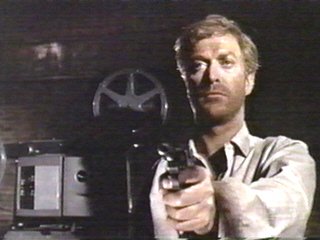


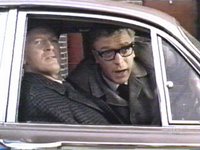





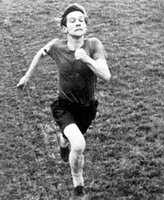





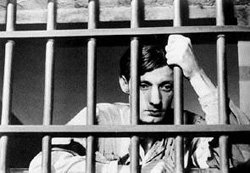
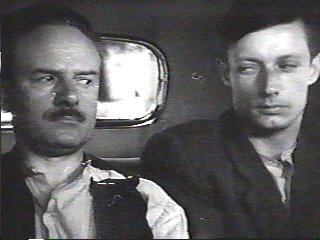

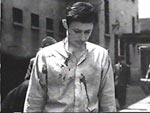
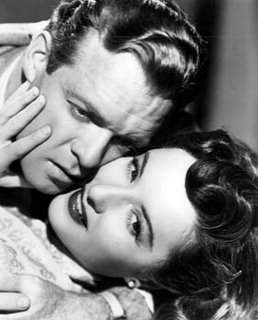
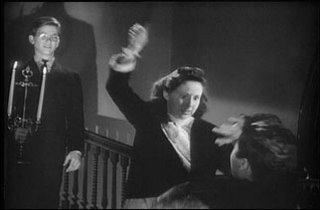

 "Our Backstreets" #6
"Our Backstreets" #6


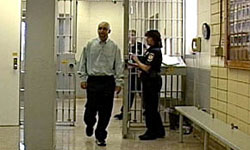

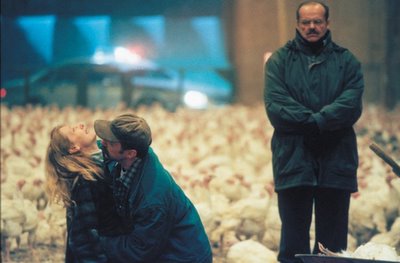 The Pledge (2001)
The Pledge (2001)